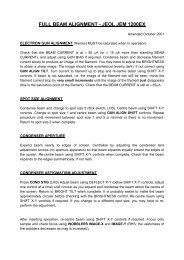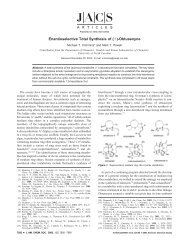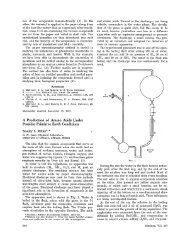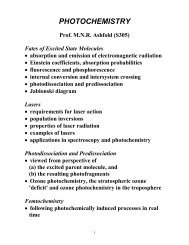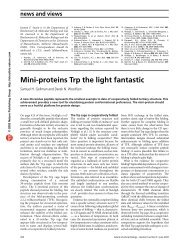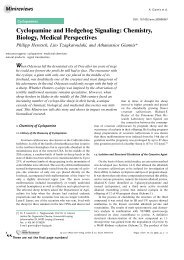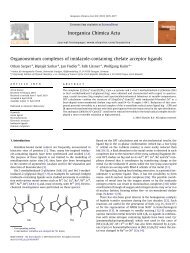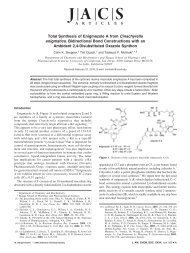Reduced Sensitivity RDX (RS-RDX) Part I: Literature Review and ...
Reduced Sensitivity RDX (RS-RDX) Part I: Literature Review and ...
Reduced Sensitivity RDX (RS-RDX) Part I: Literature Review and ...
You also want an ePaper? Increase the reach of your titles
YUMPU automatically turns print PDFs into web optimized ePapers that Google loves.
3.2.2 PBXW-115(Aust)<br />
DSTO-TR-1447<br />
To provide additional comparative data between ADI Grade A <strong>RDX</strong> <strong>and</strong> SNPE I-<strong>RDX</strong><br />
the latter was formulated into PBXW-115(Aust) <strong>and</strong> the shock sensitivity measured.<br />
The results (table 7) show that the Grade A <strong>and</strong> I-<strong>RDX</strong> gave essentially identical results<br />
which were significantly better than conventional Type II <strong>RDX</strong>.<br />
Table 7. Shock sensitivity data for PBXW-115 formulations<br />
<strong>RDX</strong><br />
50% Gap<br />
Number of cards Pressure (GPa)<br />
Data Source<br />
ADI Grade A 87 6.3 [2]<br />
SNPE I-<strong>RDX</strong> 84 6.3 This programme<br />
US Type II 130 4.7 [2]<br />
3.2.3 <strong>RDX</strong>/TNT Melt-Cast Formulation<br />
SNPE reported (section 2.1) that I-<strong>RDX</strong> did not significantly alter the shock sensitivity<br />
of melt-cast formulations. Given the absence of any data to support this finding <strong>and</strong><br />
the significance of TNT based melt-cast formulations to the Australian Defence Force it<br />
was decided to evaluate the shock sensitivity of <strong>RDX</strong>/TNT (60/40) for each of the three<br />
<strong>RDX</strong> grades. The formulations, with no waxes added, were poured at 95ºC into warm<br />
LSGT tubes, achieving a density of 1.71 ± 0.02g.cm -3 for the charges at ambient<br />
temperature. The results (table 8) clearly show that the use of <strong>RS</strong>-<strong>RDX</strong> grades does not<br />
influence the shock sensitivity of TNT based melt-cast formulations. This implies that<br />
the shock sensitivity of these formulations is dominated by something other than the<br />
nature of the <strong>RDX</strong>, as the variables in this study (conventional or <strong>RS</strong>-<strong>RDX</strong>, Type I or<br />
Type II <strong>RDX</strong> <strong>and</strong> different particle morphologies) made no difference to the shock<br />
sensitivity. One possible explanation is that the controlling factor in the shock<br />
sensitivity of the <strong>RDX</strong>/TNT formulations could be defects at the <strong>RDX</strong> – TNT interface,<br />
however there is no conclusive evidence to support this theory.<br />
Table 8. Shock sensitivity of <strong>RDX</strong>/TNT (60/40) melt-cast formulations<br />
<strong>RDX</strong><br />
50% Point<br />
Number of Cards Pressure (GPa)<br />
ADI Grade A (Lot 11852A) 234 1.7<br />
SNPE I-<strong>RDX</strong> 234 1.7<br />
Dyno Type II 235 1.7<br />
11



